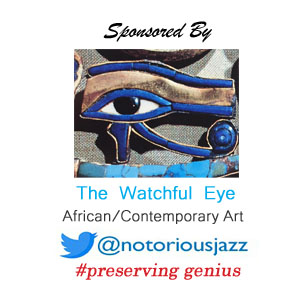
Daily Dose Of Jazz…
Huey “Sonny” Simmons was born on August 4, 1933 in Sicily Island, Louisiana and grew up in Oakland, California, where he began playing the English horn. At age 16 he took up the alto saxophone, which became his primary instrument, playing primarily in an avant-garde style, often delving into free jazz.
His then-wife, Barbara Donald, played trumpet on several of his early records, Staying on the Watch and Music from the Spheres; Arhoolie Manhattan Egos, and Contemporary titles Rumasuma and the double album Burning Spirits.
Partnering with Prince Lasha on several recordings, two of which, The Cry! and Firebirds were also released by Contemporary.
Personal problems derailed both his music career and home life, leading to divorce and homelessness. He busked on the streets of San Francisco for many years, until he resurrected his career in the early 1990s and began playing in night clubs again.
His resurgence in the mid-1990s was marked by two albums, Ancient Ritual and American Jungle, for Quincy Jones’ Qwest Records. Along with appearances in European jazz festivals, Sonny has since remained a regular performer at European festivals.
Since 2000 he has been co-leader of The Cosmosamatics with reed player Michael Marcus. Alto saxophone Sonny Simmons is among the few musicians to play the English Horn in a jazz context.
More Posts: bandleader,english horn,history,instrumental,jazz,music,saxophone
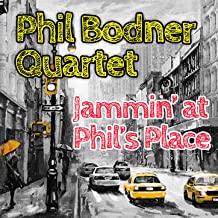
Daily Dose Of Jazz…
Philip L. Bodner was born June 13, 1917 in Waterbury, Connecticut and played in the Forties and 1950s as a sideman for studio recordings in New York City. He played on jazz sessions with Benny Goodman, with Miles Davis and Gil Evans in 1958.
Organizing The Brass Ring, a group modeled after Herb Alpert, in the mid-1960s they had popular success. Bodner also played with Oliver Nelson and J.J. Johnson during that decade. His associations in the 1970s included Oscar Peterson, Yusef Lateef, Peanuts Hucko, Wild Bill Davison, Ralph Sutton and he also played the signature piccolo part on the disco hit The Hustle by Van McCoy. Other work in the 1970s included playing with Ralph Sutton and Johnny Varro, working with Mingus Epitaph, and arranging Louie Bellson’s tribute to Duke Ellington’s Black, Brown and Beige.
The 1980s saw him working in a swing style with Marty Napoleon, Mel Lewis, George Duvivier, Maxine Sullivan, and Barbara Carroll. He released an album under his own name, Jammin’ at Phil’s Place, on Jazzmania Records in 1990, with Milt Hinton, Bobby Rosengarden, and Derek Smith as sidemen.
Multi-instrumentalist and studio musician Philip Bodner, active in jazz and popular music idioms. Best known as a reedist, he played clarinet, saxophone, oboe, English horn, piccolo, flute, conductor and arranger passed away on February 24, 2008 at age 90 in New York City.
More Posts: clarinet,english horn,flute,history,instrumental,jazz,music,oboe,piccolo,saxophone
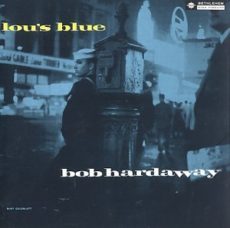
Daily Dose Of Jazz…
Bob Hardaway was born on March 1, 1928 in Milwaukee, Wisconsin to a dad who earned the nickname of J.B. “Bugs” Hardaway by inventing the characters of Bugs Bunny and Woody Woodpecker. Moving to Hollywood got him his early coaching from film composer Darrell Caulkner. As an instrumentalist, he learned many fundamentals in his Air Force band, which inspired him to write music for a touring show, Air Force Frolics, which he also conducted. After military service he returned to college in Los Angeles, California then began a career as a big-band section player in reliable outfits such as Ray McKinley. It was Billy May who came through with the first recorded solo opportunity for him on a Capitol album promising an instrumental Bacchanalia.
Hardaway’s presence as a soloist was furthermore boosted on a mid-’50s series of Decca sides by bandleader Jerry Gray, among the features being the reliable “Thou Swell,” the gentle “Baby’s Lullaby,” and a pounding “Kettle Drum.” He had the first saxophone chair in the Woody Herman band in 1956 and also performed and recorded with big-band maestros Stan Kenton, Les Elgart, Benny Goodman, Alvino Rey, and Med Flory, among others. He would record on sessions with Lulu, Bonnie Raitt, Neil Diamond, Roger Neumann’s Rather Large Band, Harry Nilsson and Doris Day.
Jazz discographies alone pile up nearly 75 recording sessions involving Hardaway between 1949 and 1995. In addition, there were vocalists and vocal groups too numerous to name outside of that genre with which he recorded, usually in the company of A-list session players such as bassist Carol Kaye. At 91, multi-instrumental reedist Bob Hardaway has been retired since the Nineties.
More Posts: clarinet,english horn,flute,history,instrumental,jazz,music,saxophone
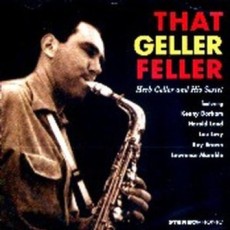
Daily Dose Of Jazz…
Herb Geller was born Herbert Arnold Geller on November 2, 1928 in Los Angeles, California. His initial exposure to was from his mother who played piano accompanying silent films at a Hollywood theater. At the age of 8, he was presented with an alto saxophone and two years later started clarinet. He went to Dorsey High School, joined the school band with Eric Dolphy and Vi Redd. At the age of 14, after hearing Benny Carter live in performance, he decided to pursue a career a music career playing his original instrument of study.
By age sixteen Geller had his first professional engagement in the band of jazz violinist Joe Venuti. A short time later he discovered Charlie Parker and Johnny Hodges and along with Carter became important idols for him. A move to New York City in 1949 saw him performing in the bands of Jack Fina with Paul Desmond, Claude Thornhill, Jerry Wald and Lucky Millinder. It was during this time he met hi future wife and musical partner Lorraine Walsh.
After three years in New York, Herb joined the Billy May orchestra in 1952 and, following an engagement in Los Angeles, returned there to live. He worked and recorded with Shorty Rogers, Maynard Ferguson, Bill Holman, Shelly Manne, Marty Paich, Barney Kessell, Andre Previn, Quincy Jones, Wardell Gray, Jack Sheldon, and Chet Baker. He recorded three album as a leader for Emarcy plus some with Dinah Washington, Max Roach, Clifford Brown, Clark Terry, and Kenny Drew.
In 1955 he won the “New Star Award” from Down Beat Magazine, worked in the bands of Louis Bellson and Benny Goodman, played bossa nova in Beazil and sailed to Europe and played in Paris with Kenny Clarke, Kenny Drew, Martial Solal, Rene Thomas and toured with a French radio show, Musique Aux Champs-Elysées. He would go on to work with the RIAS Big Band in Berlin, play lead alto and arrange for the NDR Big Band in Hamburg and for twenty0eight years made the city his home. During this period her performed with Don Byas, Joe Pass, Sloide Hampton, Bill Evans, Red Mitchell, Art Farmer, Georgie Fame, Ray Charles, Ella Fitzgerald, Baden Powell, Peter Herbolzheimer and George Gruntz.
He composed for two musicals Playing Jazz, a musical autobiography and Josie B, based upon the life of Josephine Baker, taught at the Hochschule fur Muzik, and wrote a method of improvisation called crossover, was knighted, and awarded the Louis Armstrong Gedachtnispreis. Alto saxophonist Herb Geller who also played clarinet, flute, oboe, English horn and passed away of pneumonia in a hospital in Hamburg, Germany, aged 85, on December 19, 2013.
More Posts: english horn,flute,saxophone
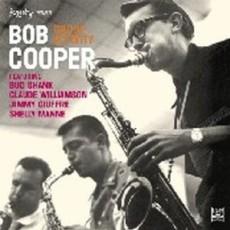
Daily Dose Of Jazz…
Bob Cooper was born on December 6, 1925 in Pittsburgh, Pennsylvania. He began to study the clarinet in high school and the following year he began working on the tenor saxophone. By 1945 he was joining Stan Kenton’s outfit when he was just 20, and as the new tenor saxophone player played alongside vocalist June Christy on “Tampico” that was to be a Kenton million-selling record. He would marry Christy two years later in Washington, DC.
Coop, as he was affectionately known, stayed with Kenton until he broke up the band in 1951. A naturally swinging jazz musician, Cooper and some other ex- Kenton men were hired to play at the Lighthouse Cafe in Los Angeles by the bassist Howard Rumsey. The Lighthouse became one of the most famous jazz clubs in the world, and the band, Howard Rumsey’s Lighthouse All Stars made history.
With a steady job he could work from home and he expanded his study of the oboe and English horn. While at the Lighthouse he made many momentous recordings, unique amongst them oboe and flute with Bud Shank, and composing a 12-tone octet for woodwind. Bob would go on to lead record sessions as part of a series of long-playing albums under “Kenton Presents” for Capitol Records.
His writing and playing on the album and its successor, “Shifting Winds” in 1955, were seminal in the creation of what was to become known as West Coast jazz. Imaginative writing and a well lubricated polish characterized the session and Cooper’s singing and stomping tenor style on his arrangement of “Strike Up The Band” boosted the record sales considerably.
Cooper would go on to tour Europe, South Africa and Japan with Christy, work as a studio musician in Hollywood, further develop his writing and compose film scores, join Kenton’s huge Neophonic Orchestra and have his composition ‘Solo For Orchestra’ premiered at one of its concerts. Much in demand for his beloved big-band work, he played regularly in other Los Angeles orchestras led by Shorty Rogers, Terry Gibbs, Bill Holman, Bill Berry, Bob Florence and Frankie Capp / Nat Pierce.
Bob Cooper, the West Coast jazz musician known primarily for playing tenor saxophone was also one of the first to play solos on oboe, passed away on August 5, 1993 in Los Angeles, California. Though maturing into one of the finest but least praised tenor saxophonists, he easily ranked with Stan Getz, Zoot Sims and Al Cohn in his talents. His last studio recording, released the year of his death, was on Karrin Allyson’s album Sweet Home Cookin on which he played tenor saxophone.
More Posts: arranger,composer,english horn,oboe,saxophone,vocal



